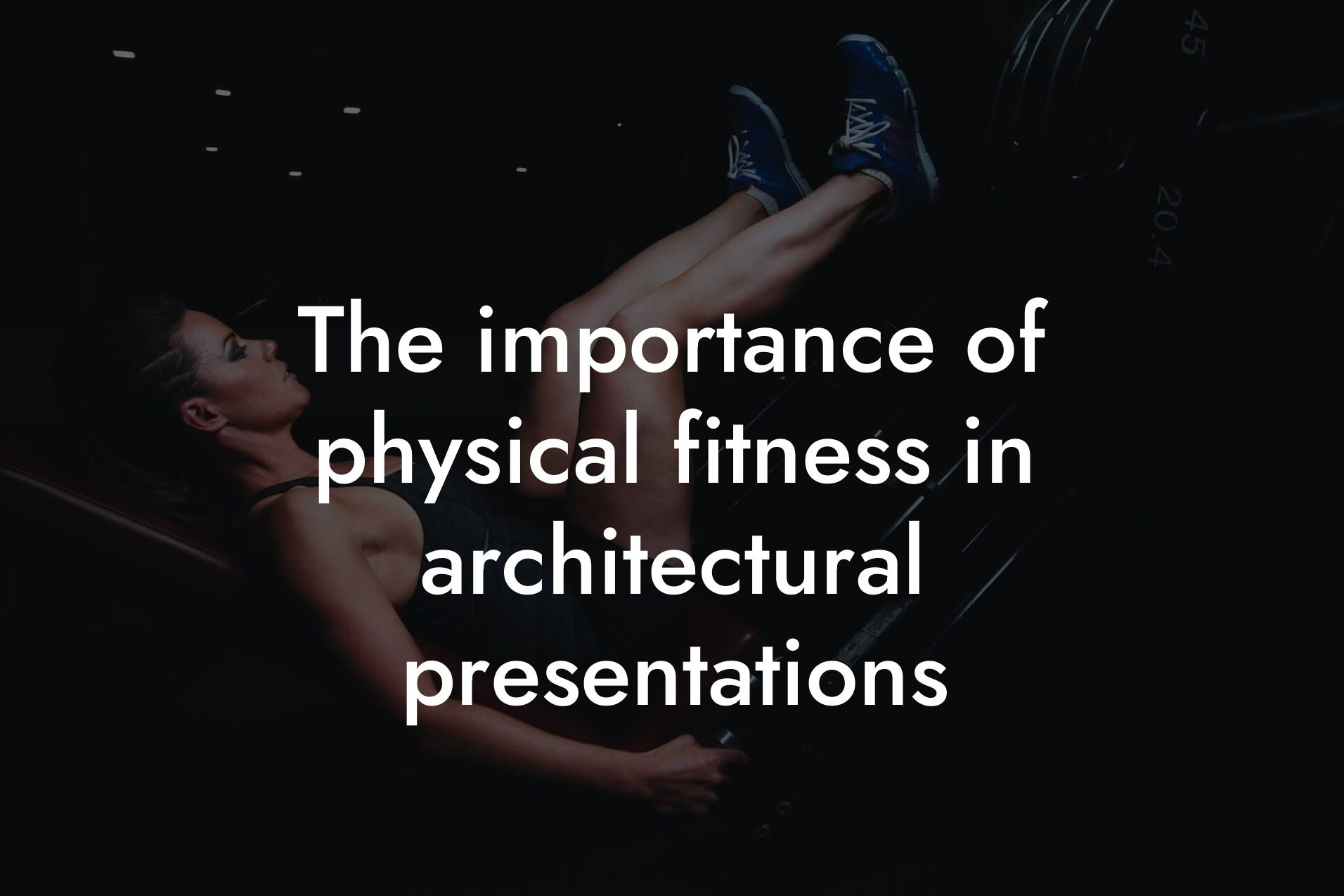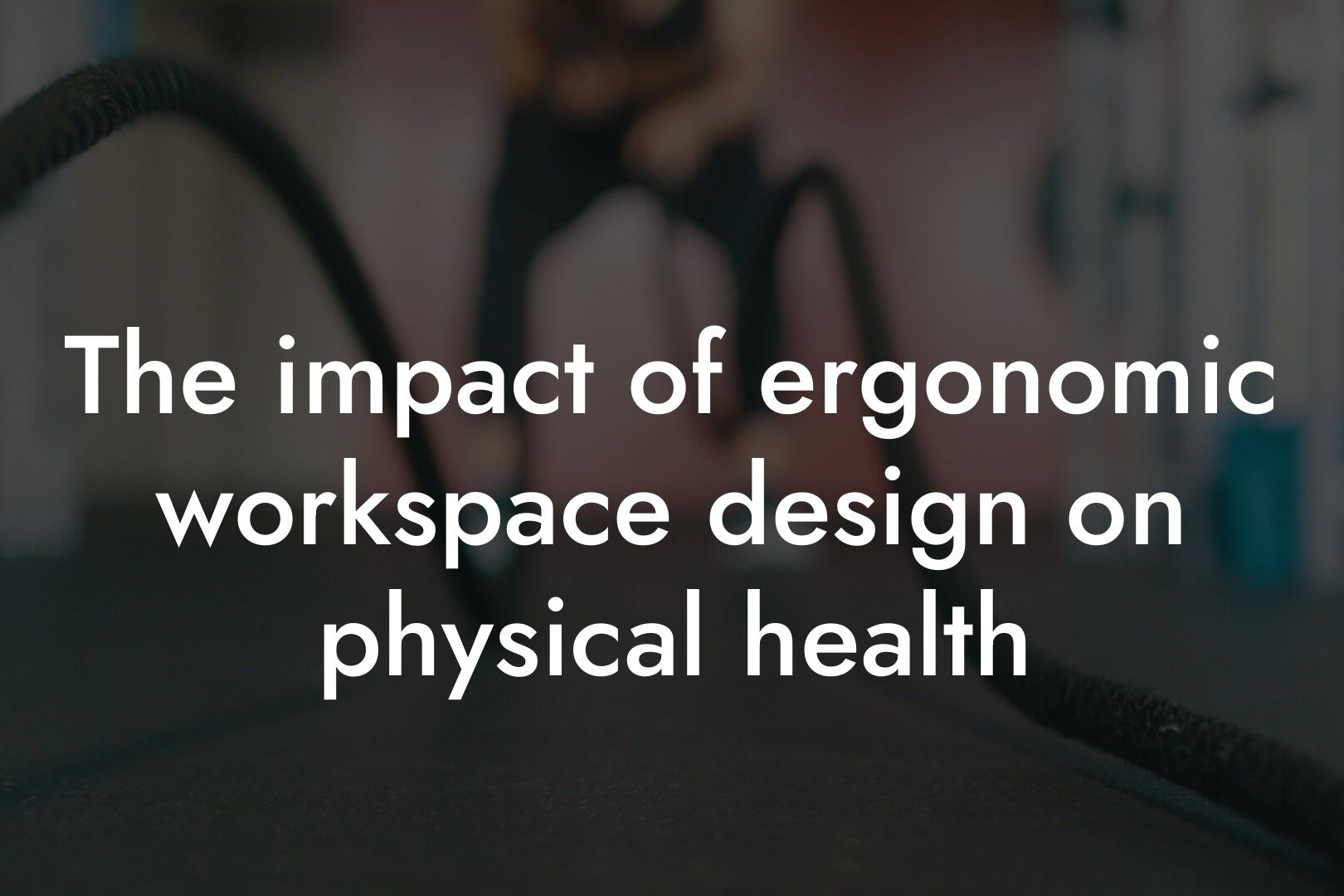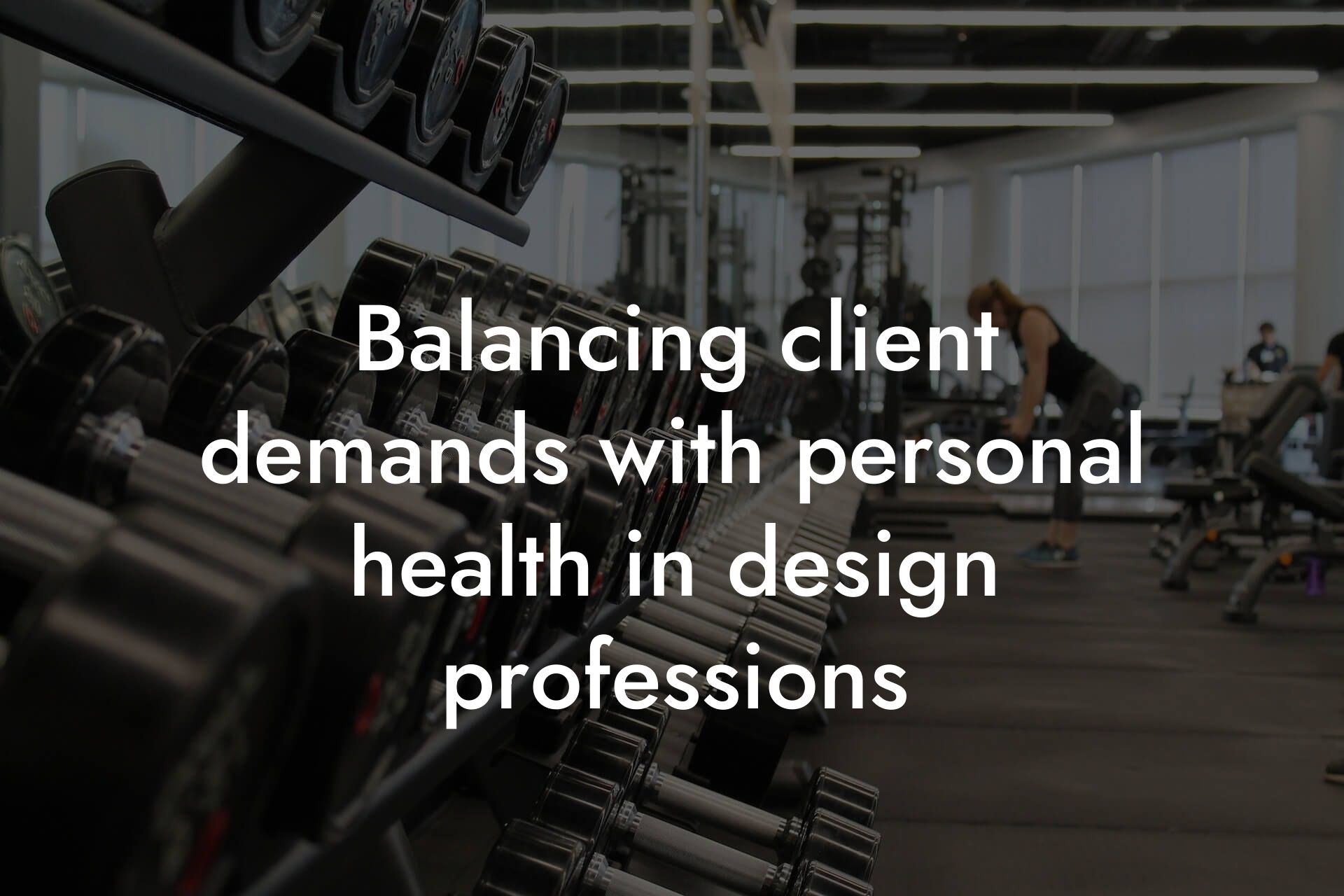As a high-earning professional in the architecture industry, you're no stranger to the demands of a fast-paced and creative field. Long hours, tight deadlines, and high expectations can take a toll on your mental and physical well-being, leading to burnout. Burnout is a state of emotional, mental, and physical exhaustion caused by prolonged stress, overwork, and lack of balance in life. It's essential to recognize the signs of burnout and take proactive steps to prevent it, and physical activity can play a crucial role in mitigating its effects.
Table of Contents
- The Consequences of Burnout in Architecture
- The Role of Physical Activity in Preventing Burnout
- Types of Physical Activity Suitable for Architecture Professionals
- Creating a Physical Activity Routine for Architecture Professionals
- Overcoming Barriers to Physical Activity in Architecture
- Integrating Physical Activity with DEXA Body Assessment
- Frequently Asked Questions
The Consequences of Burnout in Architecture
Burnout can have severe consequences on your personal and professional life as an architecture professional. Some of the common effects of burnout include:
• Decreased productivity and creativity
• Strained relationships with colleagues and clients
• Poor physical health, including weight gain, insomnia, and digestive problems
• Mental health issues, such as depression and anxiety
• Increased absenteeism and turnover rates
The Role of Physical Activity in Preventing Burnout
Regular physical activity is a powerful tool in preventing and managing burnout. Exercise can help reduce stress, improve mood, and increase energy levels, making it an essential component of a healthy work-life balance. As an architecture professional, incorporating physical activity into your daily routine can have numerous benefits, including:
• Improved focus and concentration
• Enhanced creativity and problem-solving skills
• Better time management and organization
• Increased self-confidence and self-esteem
Types of Physical Activity Suitable for Architecture Professionals
As an architecture professional, you don't need to be a fitness enthusiast to benefit from physical activity. Here are some types of exercise that can be easily incorporated into your busy schedule:
• Brisk walking or jogging during lunch breaks
• Yoga or Pilates to improve flexibility and reduce stress
• Bodyweight exercises or resistance training during commercial breaks
• Cycling or swimming for cardiovascular benefits
• Group fitness classes or team sports for social interaction and accountability
Creating a Physical Activity Routine for Architecture Professionals
To make physical activity a sustainable part of your routine, follow these tips:
• Start small: Begin with short, manageable sessions (20-30 minutes) and gradually increase duration and intensity.
• Schedule it: Treat physical activity as a non-negotiable part of your daily routine, just like meetings and deadlines.
• Find an exercise buddy: Having a workout partner can help with accountability and motivation.
• Mix it up: Vary your physical activity routine to avoid boredom and prevent plateaus.
• Monitor progress: Use a fitness tracker or mobile app to track your progress and stay motivated.
Overcoming Barriers to Physical Activity in Architecture
As an architecture professional, you may face unique barriers to physical activity, such as:
• Long hours and tight deadlines
• Sedentary work environment
• Lack of access to fitness facilities or equipment
• Prioritizing work over self-care
To overcome these barriers, try the following strategies:
• Take breaks: Use short breaks to stretch, move around, or do a few jumping jacks.
• Invest in a fitness tracker or mobile app: Utilize technology to track your progress and stay motivated.
• Find creative solutions: Use your workspace or surroundings to create a makeshift gym or exercise area.
• Prioritize self-care: Recognize the importance of physical activity for your overall well-being and make it a non-negotiable part of your routine.
Integrating Physical Activity with DEXA Body Assessment
As a high-earning professional, you understand the importance of data-driven decision making. A DEXA body assessment can provide you with valuable insights into your body composition, bone density, and overall health. By combining physical activity with DEXA body assessment, you can:
• Track changes in body composition and fat percentage
• Monitor bone density and reduce the risk of osteoporosis
• Identify areas for improvement and create targeted fitness goals
• Enhance your overall physical performance and well-being
As an architecture professional, you're not immune to the risks of burnout. However, by incorporating physical activity into your daily routine and leveraging the insights provided by DEXA body assessment, you can mitigate the effects of burnout and take your career to the next level. Remember, prioritizing your physical and mental well-being is essential to achieving success and maintaining a healthy work-life balance.
Frequently Asked Questions
What is burnout and how does it affect architects?
Burnout is a state of emotional, mental, and physical exhaustion caused by prolonged stress, overwork, and lack of balance in life. Architects are particularly prone to burnout due to the high demands of their profession, including long hours, tight deadlines, and high expectations. Burnout can lead to decreased productivity, creativity, and overall well-being, making it essential for architects to prioritize self-care and stress management.
How does physical activity help prevent burnout in architects?
Regular physical activity has been shown to reduce stress, anxiety, and depression, all of which are common symptoms of burnout. Exercise also improves mood, boosts energy levels, and enhances cognitive function, allowing architects to stay focused and productive. Additionally, physical activity provides a healthy distraction from work-related stress, helping to clear the mind and recharge the body.
What are some common physical activities that can help prevent burnout in architects?
Any form of physical activity can be beneficial, but some popular options for architects include yoga, jogging, cycling, swimming, and team sports like basketball or soccer. Even simple activities like walking, stretching, or dancing can make a significant difference. The key is to find an activity that you enjoy and can commit to regularly.
How often should architects engage in physical activity to prevent burnout?
Aim to engage in physical activity at least 3-4 times per week, with a minimum of 30 minutes per session. However, even small amounts of physical activity, such as taking a 10-minute walk during lunch breaks, can be beneficial. Consistency is key, so find a schedule that works for you and stick to it.
What are some tips for fitting physical activity into a busy architect's schedule?
Start small by incorporating short bursts of physical activity into your daily routine, such as taking the stairs instead of the elevator or doing a few jumping jacks during commercial breaks. Schedule physical activity into your calendar, just as you would any other important appointment. You can also try waking up earlier to fit in a morning workout or using your lunch break to take a walk or do a quick exercise routine.
How can architects prioritize self-care and stress management in addition to physical activity?
In addition to physical activity, prioritize sleep, nutrition, and relaxation techniques like meditation or deep breathing. Set realistic goals and boundaries, learn to say no to excessive workload, and take regular breaks throughout the day. Prioritize activities that bring you joy and help you disconnect from work-related stress, such as hobbies or spending time with loved ones.
What are some common obstacles that prevent architects from engaging in physical activity?
Common obstacles include lack of time, energy, or motivation, as well as physical limitations or injuries. Additionally, architects may feel that they need to prioritize work over self-care or that physical activity is a luxury they cannot afford. However, it's essential to remember that physical activity is a necessary investment in your overall health and well-being.
How can architects overcome these obstacles and make physical activity a priority?
Start by identifying the obstacles that are holding you back and brainstorming solutions. For example, if you lack time, try finding activities that can be done in short bursts or during breaks. If you lack motivation, find a workout buddy or join a fitness class. If you have physical limitations, consult with a healthcare professional to find adapted exercises or activities that suit your needs.
What are some benefits of physical activity specifically for architects?
In addition to reducing burnout, physical activity can improve focus, creativity, and problem-solving skills, all of which are essential for architects. Physical activity can also enhance spatial awareness, visualization, and critical thinking, allowing architects to approach design challenges with a fresh perspective.
How can physical activity improve creativity and problem-solving skills in architects?
Physical activity has been shown to increase blood flow to the brain, which can improve cognitive function and enhance creativity. Exercise also promotes the growth of new neurons and forms new neural connections, allowing architects to approach problems from new angles and think outside the box.
What are some ways that architects can incorporate physical activity into their workday?
Try taking a walking meeting with colleagues, using a standing desk or treadmill desk, or incorporating stretching exercises into your workflow. You can also take breaks to do a few jumping jacks or yoga poses, or schedule a workout session during your lunch break.
How can architects make physical activity a habit?
Start by setting realistic goals and creating a schedule that works for you. Find an accountability partner or workout buddy to help motivate you. Track your progress and celebrate small victories along the way. Most importantly, remember that physical activity is a journey, not a destination, and that every small step counts.
What are some resources available to architects who want to prioritize physical activity and prevent burnout?
There are many resources available, including fitness classes, personal trainers, and online workout platforms. Architects can also consult with healthcare professionals or wellness experts to create a personalized fitness plan. Additionally, many architecture firms and organizations offer wellness programs or employee benefits that support physical activity and self-care.
How can architects prioritize physical activity while working long hours or meeting tight deadlines?
It's essential to remember that physical activity is not a luxury, but a necessity for maintaining productivity and focus. Even small amounts of physical activity, such as taking a short walk or doing a few stretching exercises, can make a significant difference. Prioritize physical activity during breaks or schedule it into your calendar, just as you would any other important task.
What are some common myths about physical activity and burnout in architects?
One common myth is that physical activity takes away from work time or productivity. However, physical activity has been shown to improve focus, creativity, and overall well-being, leading to increased productivity and better work quality. Another myth is that physical activity is only for young or able-bodied individuals, when in fact, physical activity can be adapted to suit any age or ability.
How can architects involve their colleagues or team members in physical activity and burnout prevention?
Organize group fitness classes or workout sessions, create a workplace wellness program, or encourage team members to share their own physical activity routines and tips. You can also create a friendly competition or challenge to encourage team members to prioritize physical activity and self-care.
What are some ways that physical activity can improve overall well-being in architects?
In addition to reducing burnout, physical activity can improve mood, sleep quality, and energy levels, leading to overall well-being and happiness. Physical activity can also reduce symptoms of anxiety and depression, improve self-esteem, and enhance cognitive function.
How can architects measure the impact of physical activity on their burnout levels and overall well-being?
Track your physical activity levels, sleep quality, and energy levels, and monitor your symptoms of burnout, such as stress, anxiety, and fatigue. Use a journal or app to track your progress and identify patterns or correlations between physical activity and burnout levels. Consult with a healthcare professional or wellness expert to create a personalized plan and track your progress.
What are some final tips for architects who want to prioritize physical activity and prevent burnout?
Remember that physical activity is a journey, not a destination, and that every small step counts. Prioritize self-care and stress management, and don't be afraid to ask for help or support when needed. Most importantly, remember that taking care of your physical and mental health is essential for maintaining your overall well-being and achieving your full potential as an architect.
Here are some related articles you might love...
- The importance of physical fitness in architectural presentations
- The impact of ergonomic workspace design on physical health
- Balancing client demands with personal health in design professions
- How DEXA scans can benefit architects and designers
- Fitness strategies for balancing design work and physical health
- Nutrition for maintaining creativity and energy in design work
- The connection between body composition and creative output
- How architects can stay fit during long design sessions
- How to stay active during the design and build phases
Zak Faulkner
Zak Faulkner is a leading authority in the realm of physical health and body composition analysis, with over 15 years of experience helping professionals optimise their fitness and well-being. As one the experts behind Tano Performance Group, Zak has dedicated his career to providing in-depth, science-backed insights that empower clients to elevate their physical performance and overall health.
With extensive knowledge of DEXA technology, Zak specializes in delivering comprehensive body assessments that offer precise data on body fat, muscle mass, bone density, and overall physique. His expertise enables individuals to make informed decisions and achieve their fitness goals with accuracy and confidence. Zak’s approach is rooted in a deep understanding of human physiology, combined with a passion for helping clients unlock their full potential through personalised strategies.
Over the years, Zak has earned a reputation for his commitment to excellence, precision, and client-focused service. His guidance is trusted by top professionals who demand the best when it comes to their health. Whether advising on fitness programs, nutritional strategies, or long-term wellness plans, Zak Faulkner’s insights are a valuable resource for anyone serious about taking their health and fitness to the next level.
At Tano Performance Group, Zak continues to lead our Content Team revolutionising how professionals approach their physical health, offering unparalleled expertise that drives real results.




